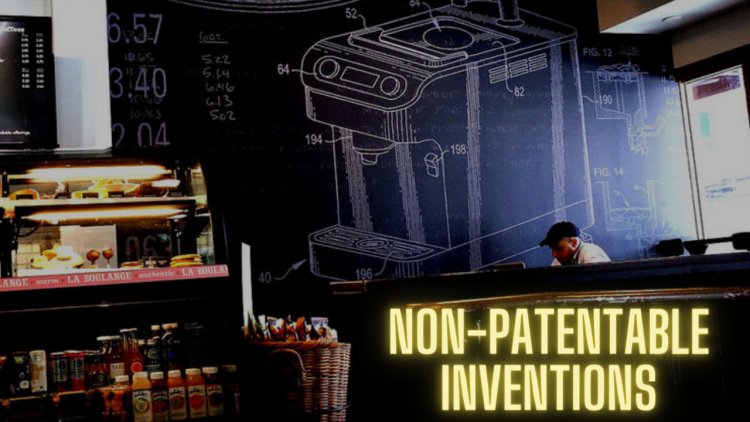A detailed study on non patentable inventions, with examples.
This article delves into the realm of non-patentable inventions, exploring the nuances and implications of innovations that do not meet the criteria for patent protection. The study aims to provide a comprehensive understanding of the factors that render certain inventions ineligible for patents, shedding light on the importance of trade secrets, public domain knowledge, and other avenues for safeguarding intellectual property. Through insightful examples, this examination seeks to illustrate the diversity of non-patentable inventions and their significance in the broader landscape of innovation.

Introduction:
In the dynamic realm of intellectual property, patents stand as pillars of protection for inventors, granting exclusive rights to their creations for a limited period. However, not all innovations are eligible for this coveted legal shield. A myriad of factors, ranging from the nature of the invention to legal considerations, can render certain creations non-patentable. This article embarks on a detailed study of non-patentable inventions, aiming to unravel the intricacies surrounding their eligibility and explore alternative means of safeguarding intellectual property.
Understanding Non-Patentable Inventions:
Non-patentable inventions encompass a broad spectrum of innovations that, for various reasons, do not meet the criteria for patent protection. The foremost requirement for a patent is that the invention must be novel, non-obvious, and useful. However, certain types of innovations inherently fall outside these parameters.
One category of non-patentable inventions includes discoveries of natural phenomena, laws of nature, and abstract ideas. These concepts, although potentially groundbreaking, are not eligible for patents as they are considered part of the public domain. For instance, the discovery of a new scientific principle or a mathematical formula, no matter how ingenious, cannot be patented.
Additionally, inventions that lack utility or have purely aesthetic value may be deemed non-patentable. This criterion emphasises the practical application and functionality of an invention, excluding purely ornamental designs or ideas devoid of any real-world application.
Trade Secrets as an Alternative:
While patents are a common means of protecting intellectual property, non-patentable inventions find refuge in trade secrets. Trade secrets encompass confidential business information, such as manufacturing processes, formulas, and customer lists, that provides a competitive advantage. Unlike patents, trade secrets do not involve a public disclosure of the protected information.
For example, the recipe for a famous soft drink is a closely guarded trade secret. The formula is not disclosed to the public or competitors, allowing the company to maintain a competitive edge without relying on patent protection. Trade secrets are particularly valuable for inventions that cannot meet the stringent novelty and disclosure requirements of the patent system.
Public Domain Knowledge and Non-Patentable Inventions:
Public domain knowledge plays a pivotal role in determining the patentability of an invention. If the information is already part of the public domain—accessible to the public and not protected by intellectual property rights—it cannot be patented. This is a critical consideration for inventors, as failing to establish the novelty of an invention can lead to its exclusion from patent protection.
For instance, an inventor develops a new software application, only to discover that a similar application has been previously released and is freely available in the public domain. In such a scenario, the novelty criterion is not met, rendering the invention non-patentable.
Legal Considerations and Non-Patentable Inventions:
Legal restrictions also contribute to the classification of inventions as non-patentable. Inventions that are contrary to public policy, morality, or are inherently harmful may be denied patent protection. This is a subjective criterion that requires a careful examination of the societal implications and ethical considerations surrounding the invention.
Furthermore, certain jurisdictions may have specific exclusions or limitations on patent eligibility. In some cases, software algorithms or business methods may face challenges in meeting the patent criteria, leading to debates about the scope of patentable subject matter.
Examples of Non-Patentable Inventions:
To elucidate the diverse landscape of non-patentable inventions, consider the following examples:
Mathematical Algorithms:
Mathematical algorithms, while ingenious and essential in various fields, often fall outside the realm of patentability. Algorithms that represent abstract mathematical concepts without a specific practical application may be considered non-patentable.
Works of Art:
Paintings, sculptures, and other works of art, despite their creative and aesthetic value, are generally not eligible for patent protection. Instead, artists rely on copyright laws to safeguard their creations.
Scientific Principles:
Discoveries of scientific principles, such as the laws of physics or chemistry, are not patentable. While these discoveries may pave the way for groundbreaking technologies, they are considered part of the public domain.
Business Methods:
Certain business methods, particularly those focused on organising and managing information, may face challenges in meeting the patent eligibility criteria. Legal considerations and debates about the patentability of business methods continue to evolve.
Plant Varieties Found in Nature:
Plant varieties that occur naturally and are not the result of human intervention are generally not eligible for patent protection. However, genetically modified plants may be eligible if they meet the requisite criteria.
Conclusion:
In the ever-evolving landscape of innovation, understanding non-patentable inventions is crucial for inventors, entrepreneurs, and legal professionals alike. While patents offer robust protection for certain creations, a multitude of factors can render innovations ineligible for this form of intellectual property protection. Trade secrets, reliance on public domain knowledge, and adherence to legal considerations become paramount for safeguarding non-patentable inventions.
This detailed study has aimed to shed light on the complexities surrounding non-patentable inventions, emphasizing the importance of alternative protection mechanisms. Through examples spanning mathematical algorithms, works of art, scientific principles, business methods, and plant varieties, the diversity of non-patentable inventions becomes apparent.
As the landscape of intellectual property continues to evolve, a nuanced understanding of non-patentable inventions becomes increasingly essential. Inventors and innovators must navigate the intricate web of legal considerations, public domain knowledge, and alternative protection strategies to ensure the recognition and preservation of their valuable creations in a competitive and dynamic global innovation ecosystem.












